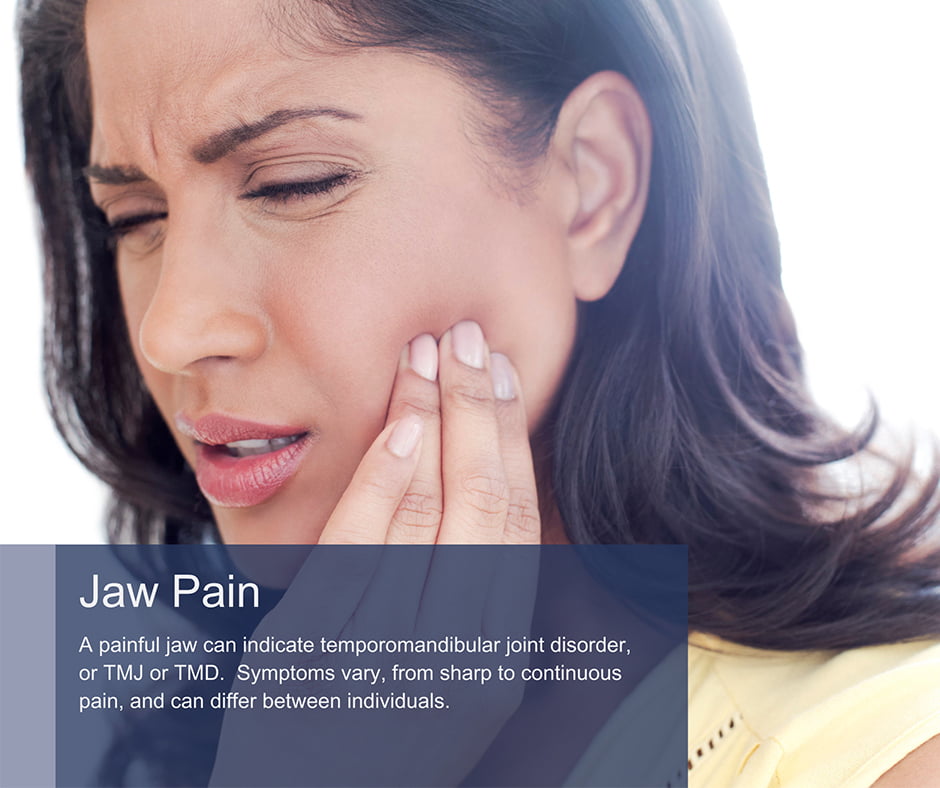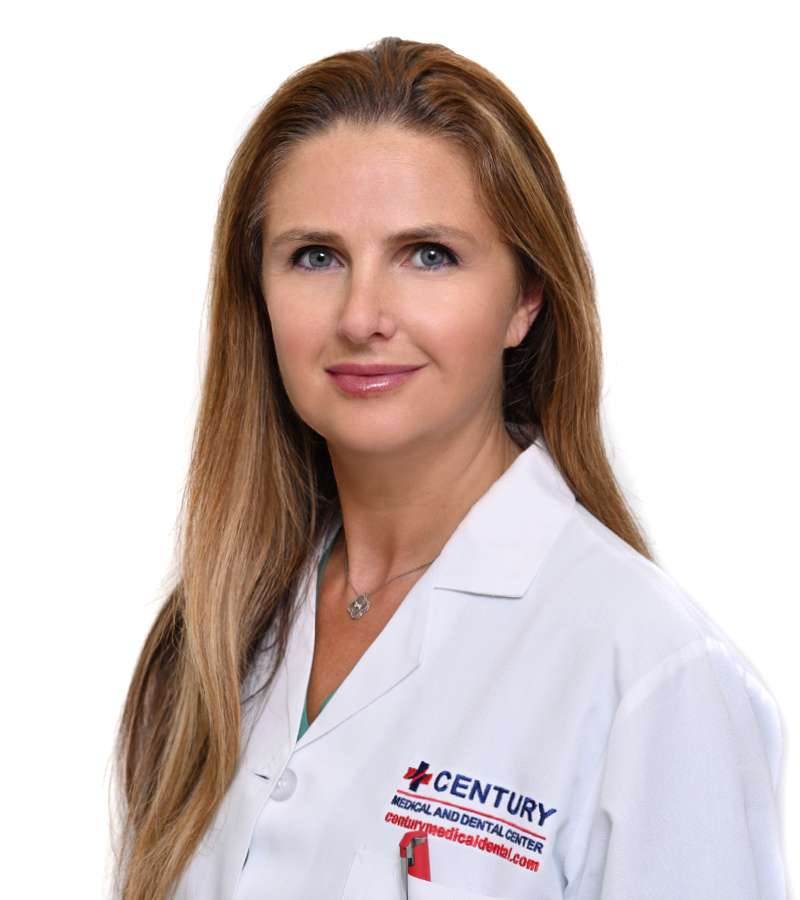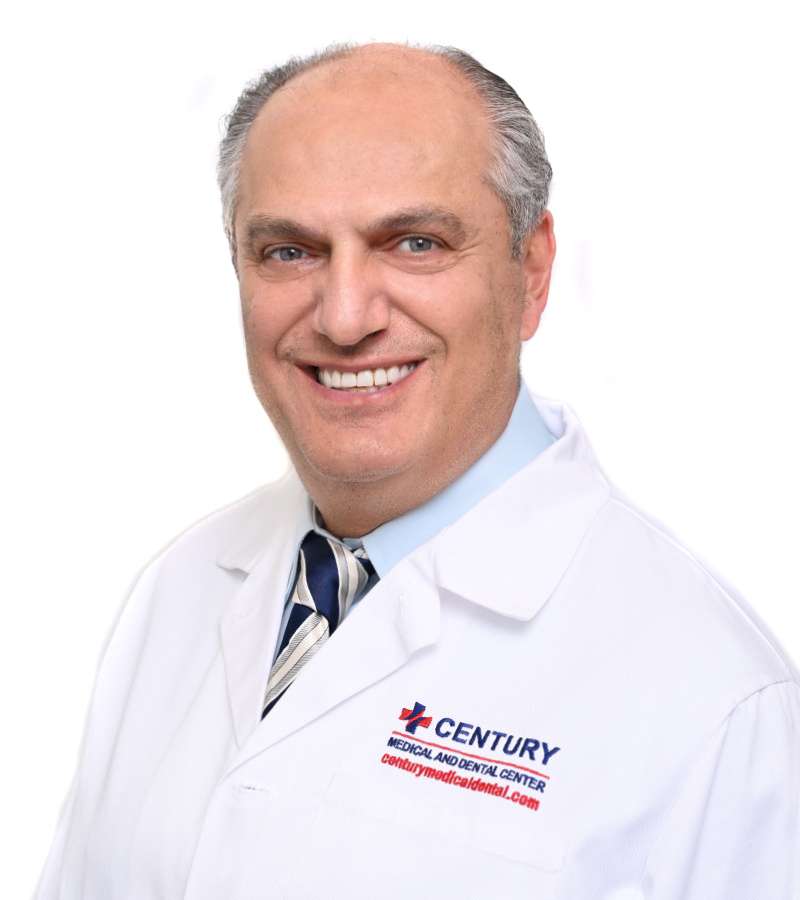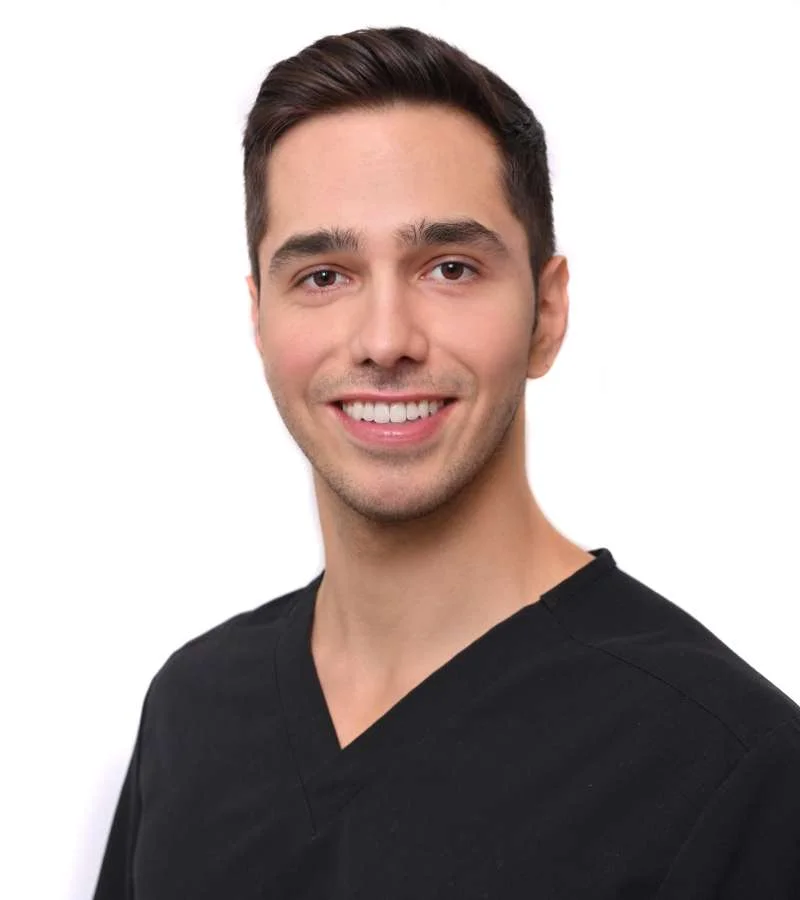

We accept most insurances, including Medicaid, Medicare, checks, cash, credit cards, and Care Credit Financing.
Copyright ©2025
Century Dentistry Center
Table of contents
A painful jaw can indicate temporomandibular joint disorder, or TMJ or TMD. Jaw pain can affect the jaw muscles or the temporomandibular joints, which are the jaw joints or the face. It can cause various symptoms, and the degree of pain can differ from one person to the next, ranging from a sharp, stabbing pain to a dull throbbing pain or more continuous pain. Some people also suffer from numbness or tingling sensation.
In addition to TMD, jaw pain can be caused by other factors, including the following.
Sometimes jaw pain will only affect one side of the jaw, so if you have jaw pain on the right side or jaw pain on the left side, it could be down to a problem with your bite or a symptom of TMD. Other times the pain may be due to overworked jaw muscles or when these muscles become tense and tight because your jaw cannot relax.

You should be concerned about your pain if it lasts more than a week and doesn’t respond to over-the-counter medication or when you find it difficult to sleep because of the pain. You also need to seek treatment if you have pain that goes away and then comes back or your jaw pain increases. It is a cause for concern if your jaw pain limits jaw movement or you find your jaw is locked in place, or if your jaw joints make a grinding or popping sound when you try to open and close your mouth.
If you have pain that spreads from your chest area up to your shoulders and into your jaw, it could be a sign that you are having a heart attack. This is a medical emergency requiring immediate treatment.
He's an excellent dentist. He knows exactly what to do. He listens and explains exactly what needs to be done. I'd give him ten stars if I could. Thank you.
You can take over-the-counter pain relief for a sore jaw, including anti-inflammatories. However, if this doesn’t resolve the problem, you must see a dentist and schedule an appointment to visit us at Century Dental.
When you see our dentist for jaw pain, we can gently examine your jaws, feeling the jaw joints for any signs of tenderness and inflammation. Our dentist will want to assess the range of motion of your jaw and will ask you to open and close your mouth and move your jaw from side to side. Diagnostic tests like digital dental x-rays and a cone beam CT scan may be needed to assess your jaw joints more closely, especially if we think the joints are damaged or inflamed or are affected by arthritis.
We will also want to assess how your teeth bite together, as sometimes jaw pain can be due to a poor occlusion or poor bite, where teeth do not meet together properly, placing the jaw joints under stress. Once we have diagnosed the reason for your painful jaw, we can suggest a suitable treatment plan.
The professional dental treatment recommended for a painful jaw will depend on the cause, and we may suggest using a combination of treatments to relieve pain more effectively.
If you have a dental abscess, we may need to remove the problem tooth to allow the abscess to drain and get rid of the jaw pain. We might prescribe anti-inflammatories or injections to relieve jaw joint pain, for example, if it is due to arthritis. If you have a problem with teeth grinding and clenching, a custom-made night splint can often relieve jaw pain. It is a night guard that you wear during sleep, as bruxism tends to be a nocturnal habit, and it helps prevent clenching and grinding and places your jaws into a more relaxed position.
If your teeth do not bite together properly, we might suggest you have orthodontic treatment to realign them. Correcting your bite could relieve the pain in your jaw.
In addition, there are several self-help treatments that you can try at home, which can be useful. For example, try to avoid foods that require a lot of chewing, like tough meat, vegetables, candies, and chewing gum. Instead, stick to eating softer foods that require minimal chewing for a while to help your jaw joints relax.
Bruxism is often related to stress, so learning relaxation techniques can help. Try to actively place your jaw into a relaxed position during the day, positioning the tip of your tongue between your upper and lower teeth. Applying moist heat to your jaw joints can help reduce muscle soreness. Alternatively, use ice packs to help reduce any swelling caused by jaw pain.

Family Dentist
Brooklyn
Gravesend

Family Dentist
Manhattan
Manhattan

Family Dentist
Brooklyn & Manhattan
Manhattan, Downtown

Dentist
Brooklyn & Manhattan
Gravesend, Manhattan, Downtown

Dentist
Manhattan
Manhattan

Dentist
Brooklyn & Manhattan
Manhattan, Livingston

Dentist
Brooklyn & Manhattan
Manhattan, Livingston
When wisdom teeth begin trying to erupt, you might notice you have jaw pain. This can occur if your wisdom teeth are impacted, where they cannot erupt fully, or are trying to erupt underneath the adjacent teeth or sideways through the gum. Sometimes a cyst can develop around an impacted wisdom tooth, causing pain. When wisdom teeth are the cause of the pain, we will recommend their removal.
If you need an abscessed tooth or impacted wisdom tooth removed, your jaw might feel slightly tender for a few days afterward. The extent of the discomfort depends on the tooth being extracted and whether we need to make an opening in your jawbone to remove it. When removing impacted wisdom teeth, we need to make a small opening in the jaw so we can see the tooth and cut it into smaller sections to remove it more easily and comfortably. In contrast, removing an abscessed tooth is considerably quicker and easier and doesn’t require an incision into the jaw, so recovery afterward should be faster.
It’s not unusual to experience jaw pain, but it is always worth contacting us for help and advice if it persists. There is no need to put up with the pain as we diagnose the problem and work with you to find a suitable solution.
Century Medical and Dental Center is an accredited healthcare facility in NY that operates in accordance with Article 28, a public health law. This law regulates and recognizes accreditation for public healthcare facilities, ensuring they are licensed and operated correctly. By undergoing the Article 28 process and achieving accreditation, Century Medical and Dental Center demonstrates its commitment to meeting the highest standards of care.
As a multidisciplinary medical center, we have highly qualified doctors, nurses, and support staff who are working hard to provide the best medical care to patients in Midtown Manhattan, NY, Downtown Brooklyn, NY, including Brooklyn Heights, Dumbo, Prospect Heights, Park Slope, Clinton Hill, Boerum Hill, Red Hook, and Bedford-Stuyvesant.